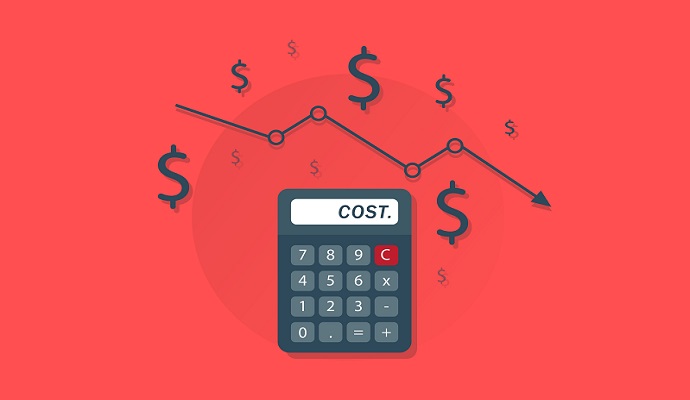How Much Does EHR Software Cost?

Maintaining electronic health records (EHR) for individuals in your care provides a number of benefits both to those individuals and your care facility.
Long Term Care EHR software helps you improve care through better coordination between providers in the healthcare continuum as well as better availability of updated and accurate information. You can also streamline your internal processes and automate manual, repetitive tasks to save time and money and further improving care. Finally, EHR systems can make regulatory compliance and reporting simple and straightforward.
With so many benefits, it’s surprising that EHR systems aren’t more widely adopted, especially among facilities like nursing homes, long-term care facilities, and post-operative care organizations.
Why Cost Keeps Care Facilities from Investing in EHR Software
For many facilities, the main barrier to adopting an EHR system is cost. The total cost of EHR software varies widely from one system to another. A hospital system, requiring complex design, implementation, integrations, and a variety of difficult functions can cost tens of thousands of dollars. A smaller facility, with fewer beds and a stable resident roster, has fewer, less complicated requirements that don’t need such a complex system.
Fortunately, technological advancements have ensured that affordable EHR software options are available to organizations of all sizes, from 1-5 bed facilities to those providing care for hundreds of residents and individuals.
Those advancements have also helped reduce the cost of EHR systems, making it a non-issue for most facilities. In this article, we’ll take a look at 3 factors that influence EHR software cost, price ranges for different types of systems, and the benefits of EHR software for care facilities.
3 Factors that Influence EHR Software Cost
1. Cloud Technology
The availability of cloud technology has reduced up-front costs associated with on-premise solutions, including the purchase of software and hardware, and additional staff for maintenance and support activities.
Now, cloud-based, software-as-a-service (SaaS) offerings provide access to full EHR software systems that run on offsite hardware for low monthly fees. These systems can be implemented quickly and easily, and are scalable to facilities of any size.
2. API Integrations and Interoperability
Application program interfaces (APIs) are the software components that allow your data to ‘speak’ to other systems. One of the benefits of EHR software is the ability for different stakeholders – in-house, hospital, pharmacy, specialist, insurance companies, etc. – to access up-to-date, complete, accurate information regarding an individual’s health history and needs.
APIs improve interoperability, making EHR systems more applicable to every aspect of patient care. As APIs make EHR software more wide-ranging, facilities can more easily justify costs to provide large-scale benefits.
3. Implementation and Training Costs
Complicated systems require in-depth training, expensive for end-users are less prevalent, and are more time-consuming to use. But as technology improves, the interfaces for EHR systems are improving as well.
New user-friendly systems are easier and faster to implement, as they require less custom coding and user training. Further, as people become more comfortable with using digital applications in their daily life, digital formats and functions will be familiar and more intuitive, allowing for faster access, evaluation, updating, and processing of records.
With lower implementation costs and fewer ongoing training needs, the cost of ownership for EHR software drops dramatically.
EHR Software Cost Ranges
So what can a facility actually expect to pay to implement an EHR system? Costs vary depending on the solution type (cloud vs. on-premise) and the pricing structure (one-time, monthly, per-user). Cloud systems will be cheaper to implement and maintain, while monthly, per-user fees are typically more cost-effective for care facilities.
If you’re evaluating EHR software, give careful consideration to the EHR features you need as well, to ensure you get the functionality to improve resident care, but don’t pay for unnecessary functionality. Long-term care facilities don’t need the complex surgical scheduling tools that hospitals require, for instance.
For a cloud-based SaaS solution, prices may vary from $1 to $199 per user per month, depending on the features and functionality the facility requires.¹ An on-premise solution may incur a one-time licensing fee of $1500 – $20,000, not including hardware, upgrade, training, support, and maintenance.
Benefits of EHR Software
The decision to implement an EHR system is an important one for healthcare facilities. While EHR does involve some costs, it also can provide many benefits, including:
- Improved care – an EHR system can help improve resident and individual care by coordinating care between providers, increasing participation, and enhancing diagnostics and outcomes.
- Automated processes – automating manual processes not only frees valuable resources for higher-level tasks, such as resident care, it also results in overall cost savings for the facility by improving efficiency and reducing errors.
- Upgraded compliance and audit processes – an EHR system that incorporates reporting functions and automates data classification improves compliance with regulations such as HIPAA, HITEC, MACRA, or the 21st Century Cures Act.
- Analytics – data gathered by EHR software For Long Term Care can be combined for an aggregate view of your facility’s population, and analyzed to identify opportunities for cost savings, service improvements, or economies of scale.
Weigh the costs of EHR software with the benefits it offers your facility, then start comparing different options to determine what’s right for you.
References
¹ https://www.capterra.com/electronic-medical-records-software/pricing-guide